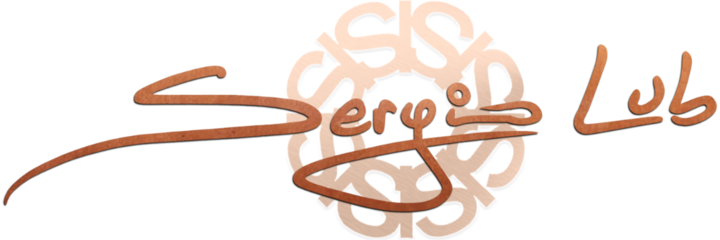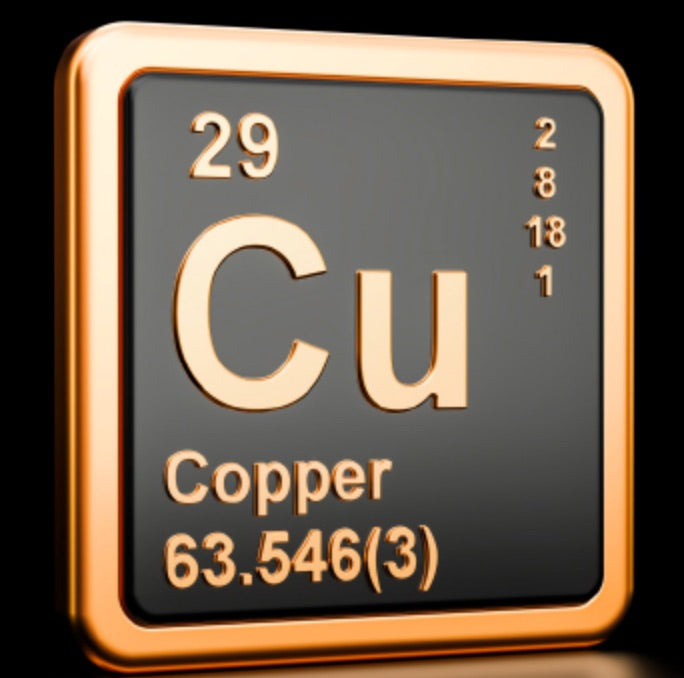News — copper and health
Copper Bracelets and Green Wrists
I have been making, wearing and selling copper bracelets since 1969. During this time people often asked: "Will this bracelet turn my wrist green?" My answer has been: "I don't know. We work with pure copper and its alloys, and we guarantee our craftsmanship for our lifetime, but the way a person reacts to copper doesn't depend on us. The only way we know to find out is by trying one."
Most customers like to wear copper and do not mind having an occasional green stain under their bracelets. Some are very health conscious and, as proof that the copper is working, they expect to see a green mark where copper touches their skin. These same marks make others feel self-conscious. Ironically, the green markings almost seems to prefer the people who worry the most about getting them. The same bracelet which remains shiny for one person, will turn another person's wrist green, or may acquire multicolored patinas on another. Could these changes be related to a person's metabolism?
The answer is Yes! The green stains are caused by deposits of chelated copper and their presence relates directly to the body chemistry of the wearer. Chelated means they are copper compounds in a soluble form assimilable by our bodies. Copper in its pure metallic form cannot be taken in by our bodies, while chelated copper compounds are more easily absorbed by our skin. They become visible when the wearer's body is dissolving the copper faster than it is absorbing it. This happens when there is profuse perspiration (as when exercising on a hot day), or when our sweat becomes more acidic. The acidity of our sweat increases with physical, emotional, or mental stress. It also increases with unhealthy diets.
Green marks are also believed to appear when the body is hungry for copper. The human body needs more minerals when growing, when pregnant, or when recovering from disease or surgery. A body starved of copper will even manage to dissolve the copper contained in gold alloys and leave marks under 14K gold rings. If you suspect having copper deficiency, please consult your holistic doctor, naturopath, or dietician, who by ordering a simple blood test will know the mineral supplements you need to regain balance. As prevention, choose to eat organically grown produce whenever possible.
The green stains are normally absorbed overnight and if needed they wash off with soapy water. If wearers strongly dislike the green marks, they have two options. They can choose to address the causes and make healthier choices or simply ignore the warning and wear no more copper.
Whenever possible we teach our customers how to read the changes in their copper jewelry and how to maintain it by themselves.
It took me nearly 30 years of practical research and collecting data from around the world to better understand this complex copper/green wrist phenomenon. In September 1995, the International Association for New Science invited me to present my findings at their Annual Conference in Ft. Collins, CO.
But one of the most concise, and clever, remarks I've heard about this remains to be, "Copper, when in contact with the skin, forms chelates with human sweat (sometimes seen as a green deposit under the bracelet) and is thus absorbed through the skin. Think of a bracelet as a 'time-release' source of copper." by Dr. Ray Walker, Univ. of Newcastle, Australia.
~~~ Sergio Lub
The Antimicrobial Properties of Copper

The antimicrobial properties of copper have been touted for centuries ever since ancient peoples first wore the brilliant metal. Today, as we face heightened health concerns that run from chronic arthritis to circulating viruses, we’ve been asked to share a compendium of information on the topic.
1.
“Copper and its alloys (brasses, bronzes, cupronickel, copper-nickel-zinc, and others) are natural antimicrobial materials. Ancient civilizations exploited the antimicrobial properties of copper long before the concept of microbes became understood in the nineteenth century.
The antimicrobial properties of copper are still under active investigation. Molecular mechanisms responsible for the antibacterial action of copper have been a subject of intensive research. Scientists are also actively demonstrating the intrinsic efficacy of copper alloy "touch surfaces" to destroy a wide range of microorganisms that threaten public health.” Read more …
2.
Metallic Copper as an Antimicrobial Surface
“Bacteria, yeasts, and viruses are rapidly killed on metallic copper surfaces, and the term “contact killing” has been coined for this process. While the phenomenon was already known in ancient times, it is currently receiving renewed attention. This is due to the potential use of copper as an antibacterial material in health care settings. Contact killing was observed to take place at a rate of at least 7 to 8 logs per hour, and no live microorganisms were generally recovered from copper surfaces after prolonged incubation. The antimicrobial activity of copper and copper alloys is now well established, and copper has recently been registered at the U.S. Environmental Protection Agency as the first solid antimicrobial material.” Read more …
3.
Rediscovering Copper Properties
Old records show that over 500 years ago, the Aztec civilization treated sore throats by gargling with a copper mixture. Earlier yet, in India, Persia, and Egypt, copper was used to treat lung diseases and skin conditions. In the 1800s, European physicians were using copper to treat arthritic patients. Research in the 1900s added the beneficial roles of copper compounds for mental and heart health. Read more ...
4.
Copper Destroys Viruses and Bacteria. Why Isn't It Everywhere?
"Today, we have insight into why a person handling copper day in and day out would have protection from a bacterial threat: Copper is antimicrobial. It kills bacteria and viruses, sometimes within minutes. In the 19th century, exposure to copper would have been an early version of constantly sanitizing one's hands.
Since then, studies have shown that copper is able to destroy the microbes that most threaten our lives. It has been shown to kill a long list of microbes including norovirus, MRSA, a staph bacteria that has become resistant to antibiotics, virulent strains of E. coli that cause food-borne illness, and coronaviruses—possibly including the novel strain currently causing the COVID-19 pandemic." Read more ...
5.
Copper Can Destroy Respiratory Viruses
“Hospital administrators should take a new look at copper, new research suggests, with evidence emerging that the metal can halt the spread of a wide array of diseases. Long before Pasteur invented the germ theory of disease, copper, and alloys such as brass, were touted as protectors against ill health. While many such pre-scientific remedies have failed rigorous testing, copper has been demonstrated to be a powerful antibiotic. Read more …
The molecular mechanisms responsible for the antibacterial action of copper are still being studied by our scientists and we are not aware of research being done yet regarding the antimicrobial properties of wearing a copper bracelet.

